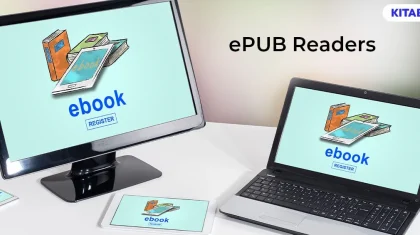
Human-Centered Innovation: Putting Users at the Core of Product Development
Summarize this blog with your favorite AI:
In 2024, human-centered design stands paramount. Studies state that design-centric companies that integrate user needs into corporate strategy outpace industry peers by as much as 228 percent!
Human-centered innovation in educational publishing begins with immersive research and observation to understand the end user’s environment and needs thoroughly. This groundwork lays the foundation for creating personas and customer journey maps, both essential tools in visualizing the user’s experience with the content.
This approach ensures that the content produced is not just functionally proficient but also resonates deeply with the end users’ goals, challenges, and aspirations.
In this blog, we’ll explore the philosophy, key components, and strategies of human-centered innovation for K12 publishers. Here’s what we’ll cover.
Table of Contents:
I. The Philosophy of Human-Centered Innovation
II. Human-Centered Innovation in Product Development
- User Research and Empathy
- Ideation and Conceptualization
- Prototyping and Iteration
- Usability Testing
- Implementation and Feedback Integration
III. Innovative Strategies in Educational Product Development
- Gamification and Adaptive Learning
- AI-Driven Assistance
- Cross-Platform Accessibility
- Data Analytics and Learner Insights
- Multimedia Integration for Engagement
IV. Conclusion
The Philosophy of Human-Centered Innovation
Human-centered innovation is an approach to problem-solving that starts with people and ends with innovative solutions tailored to their needs. At its core, it focuses on understanding the users’ experiences and designing products or services that enhance their lives.
For example in educational technology, an human-centered approach could involve developing a digital learning platform that adapts to individual learning styles. This could include features like interactive multimedia for visual learners or gamified elements for those who learn best through engagement and competition. Such customization not only makes learning more effective but also more enjoyable for students.
Human-Centered Innovation in Product Development
Human-centered innovation in product development focuses on designing solutions that deeply resonate with the end-users.
This approach comprises several key components, each playing a crucial role in ensuring the product not only meets but exceeds user expectations:
1. User Research and Empathy
At the core of this approach is an in-depth understanding of the user’s needs, preferences, and challenges. This involves conducting thorough research, such as interviews, surveys, and observation.
Empathy is critical here, as it allows publishers to step into the end users’ shoes and truly understand their experiences and requirements.
2. Ideation and Conceptualization
This stage involves brainstorming and generating a wide range of ideas based on the insights gathered from user research.
The goal is to conceptualize innovative solutions that address the users’ needs. This process often involves cross-functional teams to ensure diverse perspectives and creativity.
3. Prototyping and Iteration
Once ideas are conceptualized, they are turned into tangible prototypes. These prototypes are not final products but are used to gather feedback from users.
Based on the feedback, the prototypes are iterated upon. This process of prototyping and iteration continues until a product that meets the users’ needs and expectations is developed.
4. Usability Testing
This component involves testing the product with actual users to evaluate its usability and effectiveness.
It’s a critical step to ensure that the product is user-friendly, intuitive, and aligns with the users’ expectations. Usability testing can reveal unforeseen issues and areas for improvement.
5. Implementation and Feedback Integration
The final stage of human-centered innovation is the implementation of the product in the real world. Post-launch, continuous feedback is collected to ensure the product remains relevant and effective.
This feedback is integrated into future updates and iterations, ensuring the product continues to evolve with the users’ changing needs.
Innovative Strategies in Educational Product Development
For educational products, innovative strategies are essential to enhance learning experiences and outcomes.
Here are five such strategies and how to incorporate them:
1. Gamification and Adaptive Learning
Gamification involves integrating game-like elements into educational content to increase engagement and motivation. This approach improves student engagement and learning outcomes significantly.
Adaptive learning technology tailors educational content to individual learners’ needs, allowing for a more personalized learning experience. This method ensures that each student receives content that is most suitable for their learning pace and style.
In this context, note that KITABOO’s digital publishing platform uses data-driven algorithms to adapt the content in real-time based on the learner’s progress and understanding. It leverages gamification by incorporating interactive quizzes, leaderboards, and reward systems into its digital textbooks.
2. AI-Driven Assistance
AI-driven assistance represents a transformative strategy in educational publishing, leveraging artificial intelligence to personalize and enhance the learning experience. This approach uses AI algorithms to analyze learners’ behaviors and performance, adapting the content to their unique learning styles and needs.
By providing immediate feedback and tailored support, AI-Driven Assistance ensures a more engaging, efficient, and effective learning process.
For example, digital textbook platforms like KITABOO integrate AI tools to offer customized learning aids like flashcards, multiple-choice questions, and chapter summaries. These tools not only streamline content creation for educators but also significantly enrich the learning journey for students.
3. Cross-Platform Accessibility
Ensuring that educational content is accessible across various devices and platforms is crucial for modern learning environments.
Products need to be compatible with different operating systems, including iOS, Android, and Windows, making it easy for learners to access their materials anytime, anywhere. This approach not only increases accessibility but also caters to the varied preferences of users.
4. Data Analytics and Learner Insights
A crucial strategy in modern educational publishing is the integration of data analytics to gather deep insights into learner behaviors and outcomes. This approach involves collecting and analyzing data on how learners interact with the content, which sections they find most engaging, and where they face difficulties.
5. Multimedia Integration for Engagement
Integrating various forms of media, such as videos, audio, animations, and interactive graphics, can make learning more engaging and effective. It not only captures learners’ attention but also caters to diverse learning styles and preferences.
Conclusion
Embracing human-centered innovation is pivotal for the effective development of educational content.
By putting the end-user at the forefront of product design,this approach ensures that educational resources create more engaging, effective, and meaningful experiences.
In this light, KITABOO serves as a prime example of this philosophy. Deployed across more than 30 countries and catering to millions of users, the platform is designed to assist publishers and technology managers in navigating the evolving publishing landscape by offering a user-centric solution that goes beyond traditional paradigms.
Write to us at contact@kitaboo.com for more details!
Discover how a mobile-first training platform can help your organization.
KITABOO is a cloud-based platform to create, deliver & track mobile-first interactive training content.


